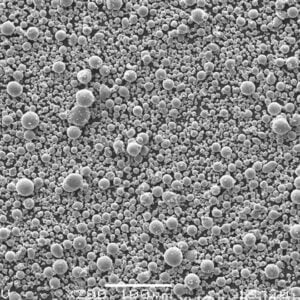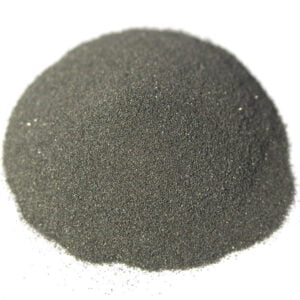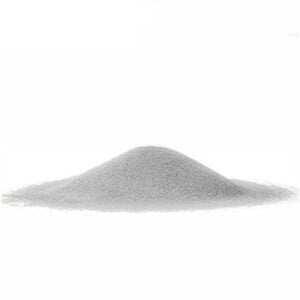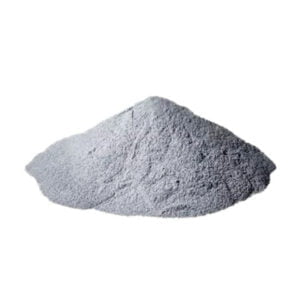TiAl3 Powder for 3D printing
TiAl3 powder is an intermetallic compound consisting of titanium, aluminum, and sometimes small amounts of other elements like chromium or niobium. It has a L12 crystal structure and is produced via gas atomization into spherical powder particles typically in the 10-150 micron range.
TiAl3 has unique properties that make it suitable for high temperature applications in aggressive environments. It combines the corrosion resistance and high strength of titanium with the low density and high temperature capability of aluminum. The material has good oxidation resistance and strength at elevated temperatures.
Low MOQ
Provide low minimum order quantity to meet different needs.
OEM & ODM
Provide customized products and design services to meet unique customer needs.
Adequate Stock
Ensure fast order processing and provide reliable and efficient service.
Customer Satisfaction
Provide high quality products with customer satisfaction at the core.
share this product
Table of Contents
TiAl3 powder is an intermetallic compound composed of titanium and aluminum. It is lightweight, oxidation resistant and can withstand high temperatures. This makes it suitable for use in aerospace, automotive, energy and other high performance applications.
Some key properties and characteristics of TiAl3 powder:
TiAl3 Powder Properties and Characteristics
| Chemical formula | TiAl3 |
| Density | 3.4 g/cm3 |
| Melting point | 1395°C |
| Young’s modulus | 170 GPa |
| Coefficient of thermal expansion | 11 x 10-6 K-1 |
| Thermal conductivity | 29 W/m-K |
| Electrical resistivity | 125 μΩ-cm |
| Oxidation resistance | Excellent up to 1000°C |
TiAl3 powder can be produced through various methods including gas atomization, plasma rotating electrode process (PREP), and mechanical alloying. The powder size, morphology, composition, microstructure and other properties depend on the production method.
The titanium content is typically in the range of 55-65 wt% and aluminum makes up the balance. Small amounts of chromium, niobium, carbon, or oxygen may be present up to 1% maximum. The ratio of Ti:Al can be adjusted to optimize properties.
TiAl3 Powder Properties
| Property | Value |
|---|---|
| Density | 3.7-4.0 g/cm3 |
| Melting Point | 1350°C |
| Thermal Conductivity | ~20 W/m-K |
| Electrical Resistivity | 125-185 μΩ-cm |
| Young’s Modulus | 160-180 GPa |
| Poisson’s Ratio | 0.25-0.35 |
| Coefficient of Thermal Expansion | 11-13 x 10<sup>-6</sup> /°C |
Key properties include low density compared to titanium alloys, high melting point, moderate thermal conductivity, and retention of strength and stiffness at high temperatures.
TiAl3 Powder Characteristics
| Attribute | Details |
|---|---|
| Particle Shape | Predominantly spherical |
| Particle Size | 10 – 150 μm |
| Flowability | Good |
| Apparent Density | ~2.5 g/cm3 |
| Tap Density | ~3.5 g/cm3 |
| Surface Area | 0.1-0.3 m2/g |
| Purity | >99.5% |
TiAl3 powder has spherical morphology with smooth surface, good flow and packing characteristics. It has low oxygen and nitrogen to avoid embrittlement.
Applications of TiAl3 Powder
Some of the major applications taking advantage of the properties of TiAl3 include:
TiAl3 Powder Applications in Additive Manufacturing
- TiAl3 powder is used in powder bed fusion processes like selective laser melting (SLM) and electron beam melting (EBM) to fabricate complex titanium aluminide components for aerospace and automotive.
- It has lower reactivity and easier printability compared to Ti6Al4V in powder bed AM. TiAl3 parts have fine microstructure and mechanical properties comparable to cast and wrought alloys.
- AM with TiAl3 enables lighter weight designs, reduced part count, and consolidation of assemblies for turbine blades, turbocharger wheels, exhaust components, etc.
TiAl3 Powder Applications in Thermal Spray
- Thermal spray coatings of TiAl3 powder provide oxidation and corrosion resistance at high temperatures on turbine blades, vanes, combustion cans, etc.
- It has better temperature capability than nickel alloys and titanium coatings. TiAl3 coatings can operate at 700-900°C.
- Coatings are applied via plasma spray, high velocity oxy-fuel (HVOF), or warm spray processes. Typical coating thickness is 150-500 microns.
TiAl3 Powder Applications in Laser Cladding
- TiAl3 powder can be laser clad on titanium or nickel alloy substrates to form a protective surface alloy layer.
- The clad layer imparts improved high temperature strength, oxidation resistance, and wear resistance.
- Laser cladding is used on jet engine and land-based turbine components exposed to hot corrosion conditions.
TiAl3 Powder Specifications
TiAl3 powder is available in several standard grades that conform to specifications such as:
TiAl3 Powder Compositions
| Grade | Ti wt% | Al wt% | Other |
|---|---|---|---|
| Ti-45Al-3Nb | 45% | Balance | 3% Nb |
| Ti-55Al | 55% | Balance | – |
| Ti-62Al | 62% | Balance | – |
Common compositions are based on the titanium content such as Ti-45Al, Ti-55Al or Ti-62Al representing the weight percentage of titanium. Small amounts of chromium or niobium may be present.
TiAl3 Powder Particle Size Distribution
| Particle Size | Distribution |
|---|---|
| -150 +45 μm | 5% max |
| -45 +22 μm | 40-60% |
| -22 μm | Balance |
Typical size distributions for AM processes are centered around 22-45 μm with minimum fines below 22 μm. Larger sizes up to 150 μm are used for thermal spray.
TiAl3 Powder Standards
- ASTM B821 – Standard for Preparation of Refractory Alloy Powders and Compacts via Plasma Techniques
- AMS 4982 – Powder Consumables, Titanium Aluminides, Plasma Atomized
- AMS 7008 – Titanium Aluminide Alloy Powder for Thermal Spray Coatings
Powder manufacture, sampling, testing, and acceptance follow industrial standards for refractory alloys and titanium aluminides.
TiAl3 powder has some advantages and disadvantages compared to other commonly used powders:
Comparison of TiAl3 Powder with Other Powders
| Parameter | TiAl3 | Ti6Al4V | AlSi10Mg |
|---|---|---|---|
| Density | Lower | Higher | Lower |
| Strength at high temperature | Higher | Lower | Much lower |
| Oxidation resistance | Excellent | Moderate | Poor |
| Thermal conductivity | Higher | Lower | Higher |
| Cost | Higher | Lower | Lower |
| Manufacturability | More difficult | Easier | Easier |
| Applications | Aerospace, automotive | Aerospace, biomedical | Automotive, general |
- TiAl3 has higher strength than titanium alloys like Ti6Al4V at temperatures above 600°C
- It offers better oxidation resistance compared to titanium and aluminum alloys
- More expensive than titanium alloys due to high aluminum content
- Not as easily machined or formed as titanium alloys at room temperature
- Best suited for high temperature structural applications
By understanding where TiAl3 outperforms or underperforms compared to other alloy systems, the ideal applications can be identified to leverage its advantages.
TiAl3 Powder Suppliers
TiAl3 powder is commercially available from a number of suppliers globally. Some of the major manufacturers are:
TiAl3 Powder Manufacturers
| Company | Product Grades | Location |
|---|---|---|
| AMETEK | TiAl3-100A, TiAl3-500 | USA |
| AP&C | TiAl3-230, TiAl3-360 | Canada |
| Sandvik | TiAl3 Osprey Powder | Sweden |
| TLS Technik | TiAl3-100A | Germany |
| Praxair | TiAl3-100A | USA |
TiAl3 Powder Pricing
| Grade | Particle Size | Price Range |
|---|---|---|
| TiAl3-100A | 15-45 μm | $450-$550/kg |
| TiAl3-230 | 45-180 μm | $350-$450/kg |
| TiAl3-500 | 10-45 μm | $500-$600/kg |
Prices depend on purchase volume, purity levels, particle size distribution and morphology. Custom alloy compositions are also possible but more expensive.
FAQs
Q: What methods can be used to produce TiAl3 powder?
A: The main production methods are gas atomization, plasma rotating electrode process, and mechanical alloying. Each method results in different powder characteristics suited for different applications.
Q: Is TiAl3 compatible with titanium alloys?
A: TiAl3 has very limited solid solubility in titanium alloys like Ti6Al4V. It is not recommended to mix TiAl3 powder with titanium alloy powders due to formation of brittle intermetallic phases.
Q: What alloying elements can be added to TiAl3?
A: Elements like Nb, Cr, Ni, Cu have been alloyed with TiAl3 to modify the microstructure and mechanical properties. However, excessive alloying can negatively impact oxidation resistance.
Q: What is the difference between PREP and gas atomized TiAl3 powder?
A: PREP powder has fine spherical particles ideal for additive manufacturing whereas gas atomized powder has slightly coarser, more cost-effective particles suitable for pressing and sintering.
Q: What precautions should be taken when handling TiAl3 powder?
A: TiAl3 powder is flammable and prone to oxidation. Proper PPE should be worn and handling should occur under inert atmosphere to prevent contamination. Moisture and oxygen exposure degrades powder quality.
Conclusion
In summary, TiAl3 is an important high temperature intermetallic material available in powder form for various applications. Its properties like low density, strength, and oxidation resistance at elevated temperatures make it suitable for aerospace, automotive and energy industries. Proper handling, storage and testing of the powder is critical to achieving final part properties. TiAl3 offers advantages over conventional titanium alloys for high temperature structural use cases despite some limitations in machinability and room temperature ductility. Ongoing research aims to further improve the material by alloying additions and innovative processing techniques.
Get Latest Price
About Met3DP
Product Category
HOT SALE
CONTACT US
Any questions? Send us message now! We’ll serve your request with a whole team after receiving your message.

Metal Powders for 3D Printing and Additive Manufacturing
COMPANY
PRODUCT
cONTACT INFO
- Qingdao City, Shandong, China
- [email protected]
- [email protected]
- +86 19116340731













